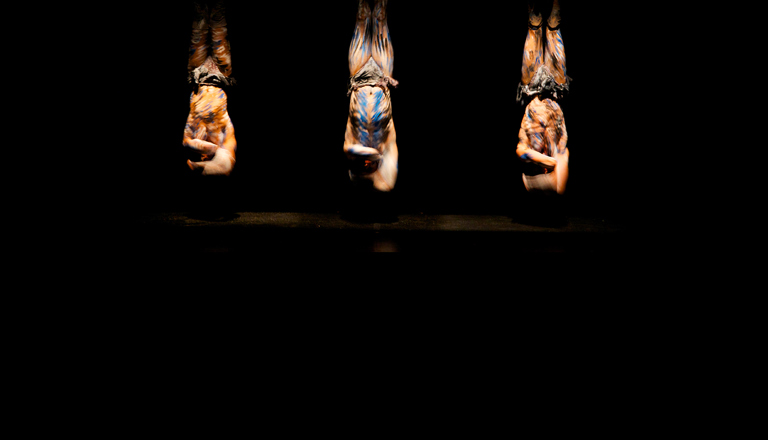Mutton Bird (2008)
Next Steps
Expand on known ideas to create new and imaginative combinations through improvising, exploring and experimenting with movement.
- Explore different movements: stretch, reach, extend, twist, pull, push, drop, expand, contract.
- Experiment with these movements balancing on different body parts.
- Move on different levels (high medium low) on the spot and when travelling.
- Explore leg and arm gestures that lead toward, away from and around your body.
Transfer and apply information in one setting to enrich another.
- Read the information found in the link to Tasmanian Parks & Wildlife Service, and look at the diagram describing the migration of the Mutton Bird. The Shearwater or mutton bird negotiates an incredible 30,000 km migration journey from the Arctic Region all the way to the southern parts of Australia. Once on our shores, they return to the same burrow every year where each pair lays just one egg.
- Draw a map of the migration flight of the Shearwater.
- Explore moving in specific ways to different places in the room, for example, run, then walk, then slide, then crawl. When you arrive at a nominated place change your movement to represent the instruction given to you. eg jump on the spot, make wide and low movements, spiral to the floor.
- Take turns leading a group travelling different pathways.
- Draw a map of your daily ‘migration’ to and from school. Draw all of the corners you turn, steps you climb, and roads you cross. Provide symbols for different sections of your trip, for example, walking up steps, riding a bike, catching a bus. Choose a movement to represent each of these symbols. Use these movements and map to travel around the space.
- Explore different dynamics as you vary your movements.
Make dance sequences
- Select your favourite parts of your dance map making sure that you keep a mixture of different travelling movements. Repeat this sequence so that you are able to perform it in the same way each time.
- Teach your sequence to another student or small group.
- Make soundscapes to accompany the movement. Use contrasting sounds to support the use of energy in particular sections of the dance.
Experiment with a range of options when seeking solutions and putting ideas into action
- Experiment with making and recalling movements using different actions, levels and leading body parts for each. Choose your four favourite movements. Show your partner each movement and teach it to them. Now swap roles.
Explore situations using creative thinking strategies to propose a range of alternatives
- Try taking turns performing each of your action’s levels and body part’s sequences – A then B.
- Join both sequences so that they flow from one to the other. A joined onto B.
- Try contrasting your sequences by performing them both at the same time.
- Perform both of your dance map sequences at the same time. A and B. What happens when you overlap?
- How else could you link these sequences?
Draw on prior knowledge and use evidence when choosing a course of action or drawing a conclusion
- Try moving using different dynamics to describe a sequence of events involving a group of animals.
- What are some of the things that a chosen animal may do? Create two sections of the sequence which are in a particular place and other sections where you travel.
Communicate ideas through their art works
- Combine several different dance map sequences in the one space. Choose different or the same destinations.
- Reverse this process to return to your starting points.
- Is there a story in the dance?
Reflect on, explain and check the processes used to come to conclusions.explaining ways they check their thinking and deal with setbacks
- Reflect on this order to see if you now have a clear beginning, middle and end. Alter the order to improve the changes between each sequence. If you are communicating a story in your dance, is it clear?
- Perform your dance to another group. Ask them what they saw and felt when they watched your dance. Could they see different pathways, formations and gestures? Did they see a story, series of events or an idea?
Explain and justify ideas and outcomes
- What could you call your dance? What kind of costume could you make or choose to go with your dance? Why have you made these choices?
- How is the movement of the body used to represent the animal or idea?
- How did the dancers use space and energy to create the ideas/feelings in this dance?
- Which elements of dance were used?
- What could you learn from watching animals and creating sequences based on their movements?
- What movements could you learn, and use in a dance, based on gathering food and other cultural practices?

